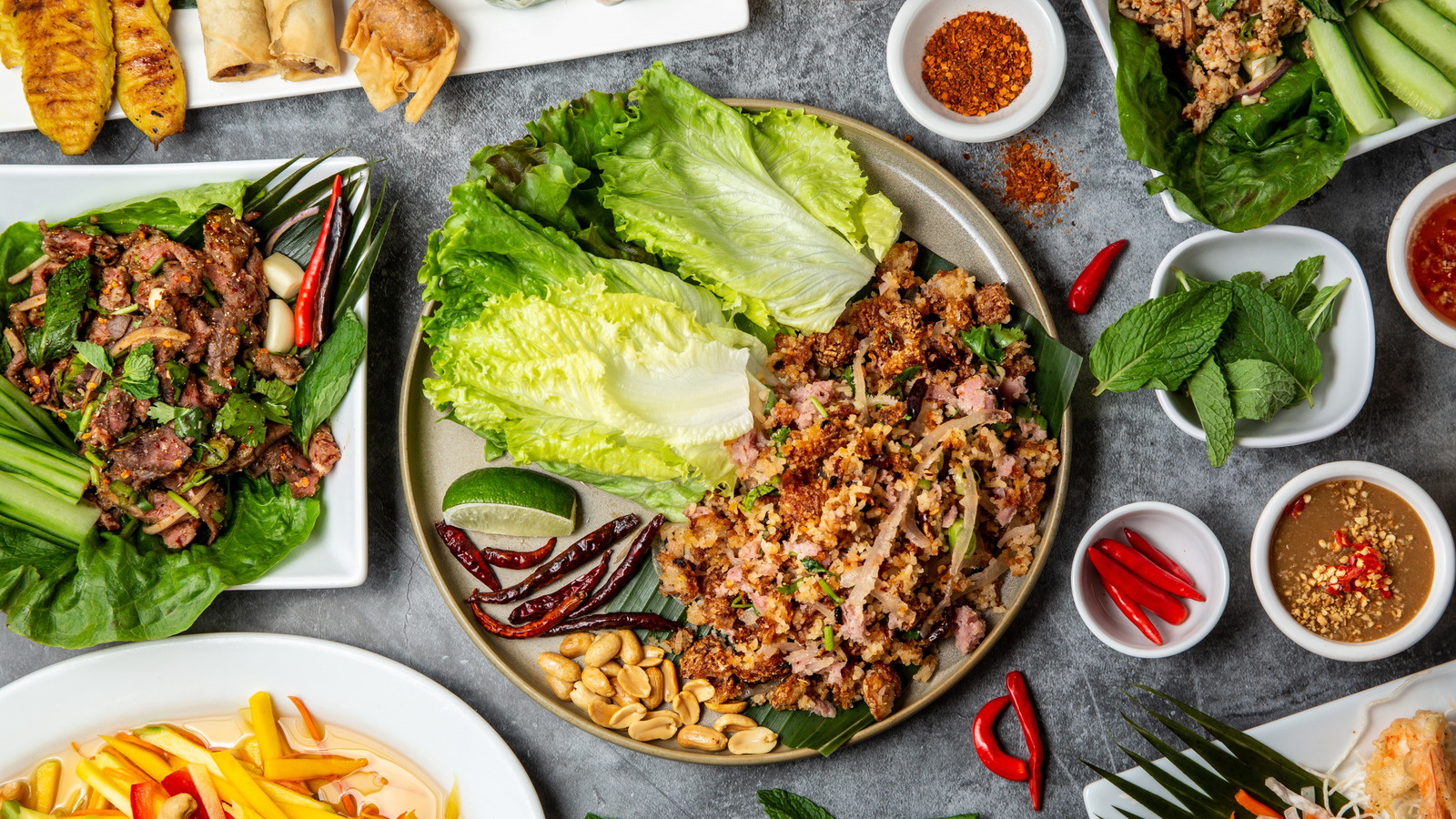
"Thai dining etiquette can seem daunting to an outsider at a large, extravagantly laid-out table. Eat with your spoon, not your fork. Don't ask for chopsticks if they aren't already on the table. Don't stir through the serving bowl looking for the perfect piece of chicken as if you're on a treasure hunt. No finger-licking, no noodle-slurping. The list might seem never-ending and too hard to remember, but much of it boils down to two simple things: restraint and respect."
"Like much of Asian cuisine, a Thai meal is designed for sharing. There will be a lot of rice (most likely two types: jasmine and sticky rice), a curry or two, a stir-fry, perhaps a soup, vegetables, fish, or meat. Set all this on the table at once and it can resemble an all-you-can-eat buffet, but treating it like one would be one of the many mistakes you can make while eating Thai food."
Thai dining emphasizes restraint and respect, with specific table manners such as using a spoon rather than a fork, avoiding chopsticks unless provided, and refraining from finger-licking or noodle-slurping. Guests should serve rice to others before taking their own and avoid heaping plates with small portions from many dishes. Meals are meant to be shared, with multiple dishes set out simultaneously, and guests should take a portion of rice and spoonfuls of two or three dishes to leave enough for others. Eating is unhurried and social; dishes are meant to be savored individually to appreciate balanced contrasts of flavors.
Read at Tasting Table
Unable to calculate read time
Collection
[
|
...
]